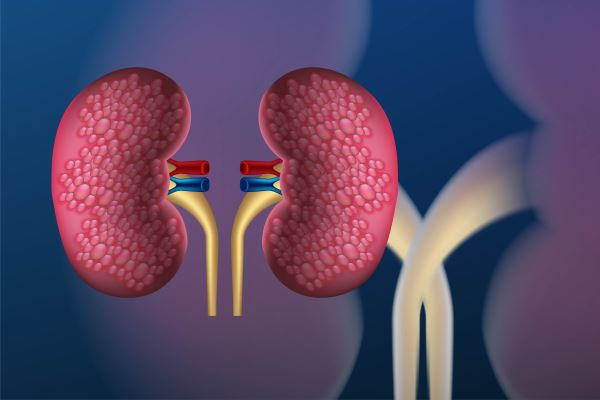
Penyakit ginjal kronik (PGK) dikaitkan dengan peningkatan risiko patah tulang, serta morbiditas dan mortalitas akibat gangguan mineral tulang terkait PGK. Osteopenia dan osteoporosis umum terjadi pada populasi umum dan dapat meningkatkan risiko fraktur tulang belakang dan non-tulang belakang (pinggul, radius, dan lainnya), serta morbiditas dan mortalitas terkait.
Efikasi dan keamanan terapi bisphosphonate untuk pengobatan osteoporosis dan osteopenia pada kondisi PGK telah diteliti dalam suatu tinjauan sistematik dan meta-analisis individu pasien dengan tujuan untuk menentukan efek terapi bisphosphonate terhadap fraktur, kepadatan mineral tulang (BMD), dan efek samping pada orang dewasa di seluruh spektrum PGK dan dialisis.
Data uji klinik dicari dari Ageline, CINAHL, Cochrane Library, EMBASE, dan Medline dari awal hingga 25 Agustus 2016, serta dilengkapi dengan skrining manual dan clinicalstudydatarequest.com. Data uji klinik yang dianalisis adalah data uji klinik acak terkontrol plasebo dengan 100 atau lebih partisipan yang mengevaluasi pengobatan osteoporosis/osteopenia primer pada pria dan wanita dewasa dengan terapi bisphosphonate.
Karakteristik, kualitas, dan data studi dinilai secara independen oleh dua peninjau. Luaran yang diukur adalah fraktur, BMD, dan adverse event termasuk penurunan laju filtrasi glomerulus (eGFR) dan hipokalsemia (kalsium <2,00 mmol/L). Dari 39 studi yang memenuhi syarat, data tingkat pasien individu tersedia untuk 7 studi, yang semuanya merupakan studi ibandronate. Dari 7.428 partisipan (5.010 pasien dengan ibandronate, 2.418 pasien dengan plasebo), 100% perempuan, 98,6% berkulit putih, indeks massa tubuh rata-rata 25,7 kg/m² (SD 3,9), 18,9% perokok, dan terdapat 740 kejadian fraktur. Rata-rata eGFR adalah 69,1 mL/menit/1,73 m² (SD 15,9), meliputi 14,5%, 54,9%, 27,5%, 3,0%, dan 0,2% pasien masing-masing PGK stadium G1, G2, G3A, G3B, dan G4.
Hasilnya menunjukkan bahwa dibandingkan dengan plasebo, terapi ibandronate meningkatkan BMD pada tulang pinggul (β 0,01493, SE 0,00166, p < 0,0001) dan tulang belakang lumbal (β 0,02451, SE 0,002533, p < 0,0001). Tidak terdapat perbedaan efikasi di antara subkelompok PGK untuk BMD tulang pinggul, tetapi terdapat peningkatan efikasi untuk BMD tulang belakang lumbal pada subkelompok PGK stadium G4 (β 0,2043, SE 0,04468, p < 0,0001).
ibandronate menurunkan risiko fraktur pada populasi keseluruhan (HR 0,871, 95% CI 0,746-1,018), tetapi tidak berbeda secara signifikan di seluruh subkelompok PGK, kecuali pada pasien PGK stadium G3B, obat ini meningkatkan risiko fraktur (HR 3,862, 95% CI 1,156-12,903, uji interaksi p < 0,05). Stadium PGK (G2, G3A, G3B vs G1) dan eGFR tidak berhubungan dengan fraktur pada kedua partisipan yang mendapat terapi bisphosphonate maupun yang diobati dengan plasebo. Ibandronate tidak memengaruhi eGFR selama 12 bulan, tetapi meningkatkan risiko hipokalsemia (HR 1,324, 95% CI 1,056-1,660) tanpa bukti modifikasi efek berdasarkan stadium PGK (semua uji interaksi p > 0,05).
Kesimpulan:
Dari penelitian ini didapatkan bahwa penyakit ginjal kronik tidak mengubah manfaat ibandronate dalam peningkatan BMD tulang pinggul dan tulang belakang pada satu tahun pada wanita dewasa dengan osteoporosis atau osteopenia dan bahwa ibandronate aman dari perspektif ginjal.
Gambar: Ilustrasi (Sumber: jcomp-Freepik)
Referensi:
Whitlock R, MacDonald K, Tangri N, Walsh M, Collister D. The efficacy and safety of bisphosphonate therapy for osteopenia/osteoporosis in patients with chronic kidney disease: a systematic review and individual patient-level meta-analysis of placebo-controlled randomized trials. Can J Kidney Health Dis. 2024 Oct 8:11:20543581241283523. doi: 10.1177/20543581241283523.










